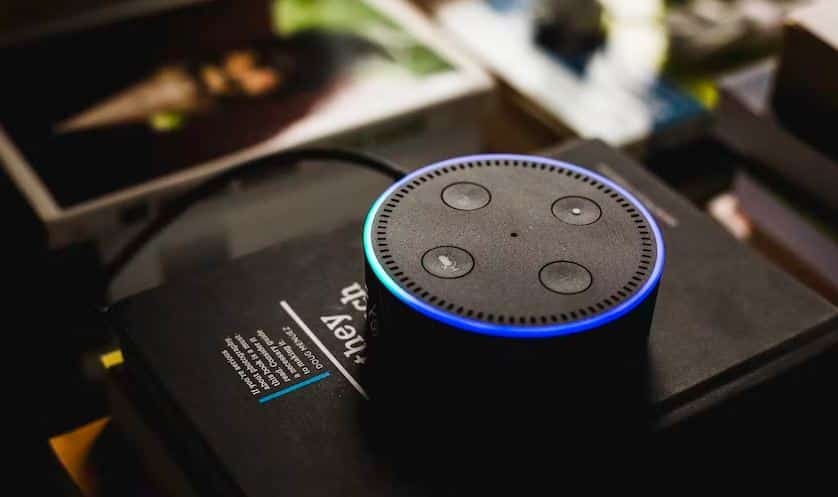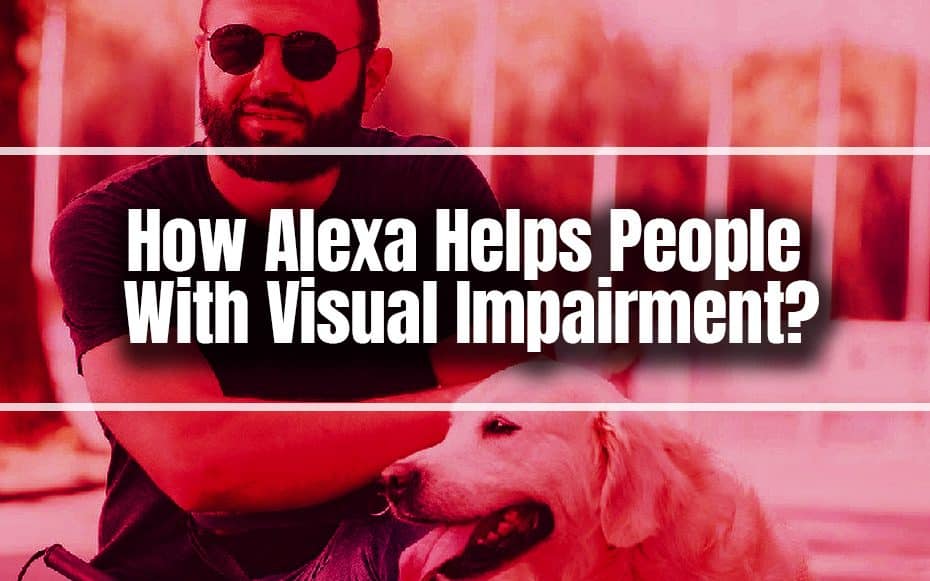Alexa devices from Amazon are gently but steadily altering millions of people’s smart homes and lives. That isn’t just useful for regular people; if you have a visually handicapped or blind individual in your smart home, Alexa can still befriend them.
How can Alexa assist the blind and visually impaired? Because Alexa is a voice-activated tool, persons who are blind or visually impaired can use it to perform tasks like messaging, phone calls, list building, calendar checking, turning devices on and off, dialing 911, and much more.

Any gadget that a voice command can activate should be easy for anyone visually impaired, and Alexa meets the bill well.
This section will discuss the features and other ways Alexa may assist all visually impaired individuals worldwide.
VoiceOver and TalkBack
Whether you use Android or iOS, there are various methods to make the Amazon Alexa app more approachable, including employing a screen reader.
If you use iOS, you already have built-in support for the VoiceOver screen reader. With VoiceOver enabled, you can receive an audio description of all onscreen items by dragging your finger around the screen. As you touch an onscreen element, VoiceOver will notify it. When you engage with an element, VoiceOver encircles it with a black rectangle, presenting sighted users with an additional visual cue.
To activate Apple’s VoiceOver screen reader, first, open the “Settings” application. Then, go to “Accessibility -> VoiceOver,” and if you haven’t previously, move the “VoiceOver” slider to the “On” position.
If you have never tried using VoiceOver before, tap “VoiceOver Practice” and try the different movements.
TalkBack is a built-in screen reader for Android users. To enable TalkBack, launch the “Settings” app on your device. Then, go to “Accessibility -> TalkBack” and tap to enable “TalkBack.”
Nevertheless, TalkBack supports two navigation ways.
Linear navigation
Linear navigation is where you swiped right and left with one finger to linearly go between the onscreen items. TalkBack will discuss each aspect as it becomes visible.
Explore by Touch
You can also use your finger to move about the screen, and TalkBack will describe each piece you come into touch with. When TalkBack identifies an aspect you want to engage in, you can choose it by double-tapping any part of the screen.
Visual Cues to Auditory Clues
Alexa devices like the Echo and Echo Dot display useful information in various colors. Nevertheless, visually impaired users may miss this crucial visual cue and wonder if Alexa has even received their request.

Remove the guesswork from dealing with Alexa by playing a sound when she begins and finishes processing a request. You can minimize disorientation and make your transactions flow more smoothly by configuring Alexa to deliver an audible indication.
To activate it, launch the Amazon Alexa app on your smartphone or tablet to enable these sounds. Tap the “Devices” section at the bottom of the screen. Then, tap “Echo & Alexa.” Pick the device you want to set and touch “Sounds.” Then, scroll to the “Request Sounds” section and activate the “Start of Request” and “End of Request” sliders.
Your Alexa-enabled device will now make a sound when it begins processing a request and another when it completes it.
Ordering Groceries
Most people cannot shop for groceries because they are visually impaired or blind. You could take an Uber or Lyft to the grocery shop, but seeing the things you want to buy and moving around the store would take a lot of work.
Programs such as PeaPod, Amazon Fresh, and Whole Foods, among others, come to the rescue. Therefore, as the baby boomer group ages and younger folks become more adept at using technology, online grocery ordering will rise and continue to expand.
Changing the Text Size
You may discover that it is simpler to comprehend the application’s text if you increase the font size. If you have an iOS device, you can increase the text size using Apple’s “Accessibility” menu. You must first click the “Settings” app on your iPhone or iPad. Then, go to “Accessibility -> Display & Text Size,” and then tap “Larger Text.” Following that, drag the “Larger Accessibility Sizes” slider to the “On” position, and then drag the slider to the right until you’re satisfied with the text’s appearance.
If you are an Android user, you can raise the text’s size or all onscreen items, including notifications and home screen icons.
First, launch your device’s “Settings” app to raise the text size. Then, touch “Accessibility -> Font size” and drag the slider to the right until you’re satisfied with the text’s appearance. You may also enable the “Increase Contrast” and “Reduce Transparency” settings simultaneously to make the onscreen text read more easily.
Controlling Smart Home Appliances
Smart home applications are another fantastic Alexa feature that can assist folks with low eyesight. The user can use voice commands to operate the home alarm system, turn on and off the television, change the TV station, regulate the temperature, lock the doors, and so on.
Smart Plugs can be connected to existing products such as TVs, lamps, coffee makers, etc. Once those are in place, you may program Alexa to turn them on and off the device automatically, or you can say something like, “Alexa, turn on the coffee maker.”
Listen to Music
When someone with an Alexa device desires to listen to music, they ask her to play that song, tracks by that artist, a specified genre, and so on.

Those who are blind or have poor vision do not have to struggle with screen readers on their PCs or fiddle with other technologies to listen to music because Alexa requires vocal instructions. People can ask Alexa to play that song and get it; it saves significant time.
Conclusion
Overall, various abilities can make life easier and safer for older people with impaired vision or who are entirely blind.
Devices like the Amazon Echo can simplify chores like reading books, playing games, and listening to music for many visually impaired individuals, including seniors who may not want to learn many computer skills. A smart home is undoubtedly the future, and chatting with your automated appliances will attract many individuals.
